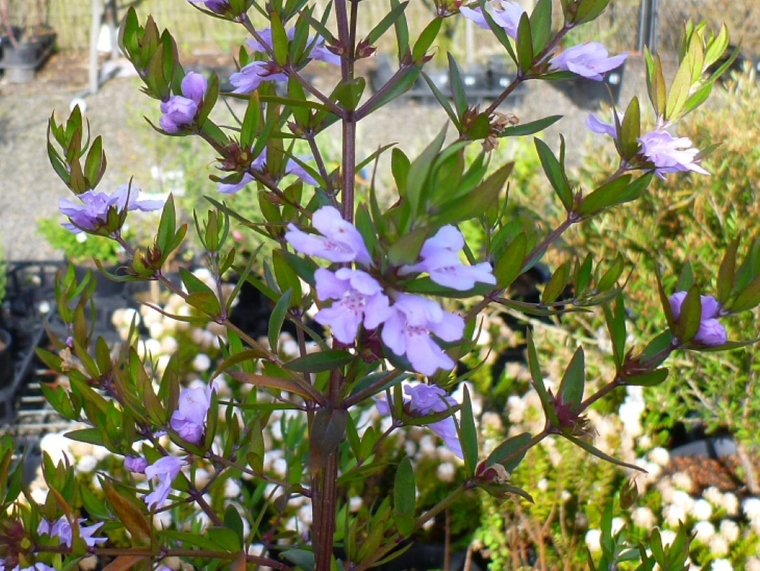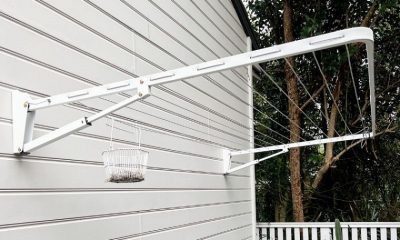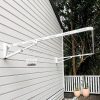House & Garden
Hedge Plants 101: How to Transform Your Yard into a Private Garden Sanctuary
Say goodbye to the neighbours or any passengers who might be too curious to sneak peek in your yard. If you need privacy to block out any unwanted sights, planting hedges, to growing a natural, living fence is the best solution. Hedges can be evergreen, semi-evergreen or deciduous plants. However, if you want really good privacy and have some greenery all year round, evergreen hedges are the best option out of all.
Evergreens not only offer the best privacy, but they add to the landscape of your garden. They bring weight to the garden, they build the bone structure of your yard, and you can prune them to your desired shape. When you have well-groomed and trimmed hedges plants, they can look incredibly beautiful and instantly elevate the appearance of your yard.
What Are Hedges Plants and How Do They Work?

So, what is the function of the hedge plant? Hedge plants are bushy plants that are planted in the yard to create much-needed privacy. We use them to create living privacy walls that act as a barrier between our yard and the outside environment.
These bushy plants not only provide a natural shield all year round, but they also add to the aesthetics of the garden and create an urban little forest. Hedging plants are more than just privacy plants. They bring added value to our garden thanks to their ability to purify the air, hide any unappealing areas of the garden or the exterior of the house and protect us from the wind.
Additionally, hedging plants provide a natural shadow for plants and flowers that should not be exposed to direct sunlight. They even help by providing natural shelter to birds and protect against flooding by absorbing the water down into their roots. These woody bushes act as natural fences to deter any larger animals and stop domesticated animals or pets from escaping.
Adding greenery to your yard will also amplify the quality of the air and help you live healthier. So, there’s always room for some extra plants in your garden, given the many benefits they bring to our health and environment. Not only are these plants functional, but they also add beauty to our surroundings.
What Plants Make the Best Hedges?
When you first start with hedging, you don’t really know where to begin and what to look for, because there are a lot of different types of hedging. Most trees and shrubs can actually be made into a hedge. However, it’s important to know that there are different plants for hedging and each has its own specifics.
Here are some of the best hedging plants used Australia-wide.
- Cypress Leightons Green
- Ficus Hillii
- Laurus Nobilis
- Acmena and Syzygium Varieties Of Lilly Pilly
- Pittosporum
- Sweet Viburnum
- Juniper Green Spartan
And if you’re looking for fast-growing hedges, these plants make the best option:
- Murraya
- Orange Jasmine
- Fiji Fire
- Sasanqua camellia
- Photinia Robusta
- Bamboo
- Starry Night
- Lilly Pilly
- Cherry Laurel
- Privet
All these plants make great living fences and not only will they provide you with privacy, but they also add aesthetics to your home and yard.
Grow a Living Fence With Privacy Trees

If you want to have a dense and green fence all year round, choose evergreen trees. The good thing about privacy trees is that most can also be pruned into hedges. Depending on the style you’re going for, choose shrubs if you want a shorter privacy screen and opt for boxwoods if you want something taller.
If you’re more fond of the classic privacy wall, you can choose to plant multiple evergreen trees of the same tree or plan a mixture of different privacy trees to add diversity to your garden.
Clusters of trees provide the best privacy due to their ability to create dense walls as they grow. But if you want to add some aesthetics to your garden, you can also plant the trees in a straight line for a clean and neat look.
If you want a fast-growing privacy tree, Lilly Pilly is the most popular choice that has been used in Australian gardens for decades. What’s more, these trees produce small pink berries that are edible and you can add them to cakes, sweets, and jams for some extra delicious flavour.
How to Plant and Care For Hedges?
Most experts advise planting evergreen hedges early in the autumn, while semi-evergreen hedges can be planted mid-autumn or late winter. However, some plants might require specific planting times, especially in terms of the weather.
If you’re new to hedging, box hedges or Buxus hedge plants are ideal to start with. They are evergreen woody plants that are easy to shape and maintain and they are some of the most popular plants used for hedging. They can grow in challenging environments and withstand the toughest conditions.
To plant them, dig out separate holes for each box hedge and make sure to leave at least 20 cm space between holes for low hedges, and 30-35 cm for tall box hedges. Place the plant in the middle of the hole and use excavated soil and compost to fill the holes. Afterwards, just water the plant and you’re done. For best results, plant them between the months of March and May.
Generally speaking, before you plant any hedge, it’s important to add a high-quality soil mix or compost to the holes and add some fertilizer for added nutrition to the plants and water them. Keep fertilizing and watering the hedges at recommended intervals and quantities (depending on the hedge type). Most importantly, always leave space between holes before planting any type of hedge. It’s important to give them enough space for proper growth and development.
To promote growth and density, prune the hedges regularly. If unsure when you should prune them, there are some signs that it’s time for trimming and shaping. Whenever you notice that the hedge plant has new growth, take out or cut any new leaves to keep the plant compact and prevent unruly-looking growth. It’s best to prune when it’s growing season, so the plants recover nicely and quickly.
As a proud Pisces known for the selflessness, Olivia joined up the blog fascinated by the idea she can help readers with info on topics and their related benefits like health and beauty, travel, food and drinks. When not writing, she likes to call it a day reading comic books in the company of her Tonkinese cat Chatty or binge-watching The Big Bang Theory with her SO like the nerd she is.

























